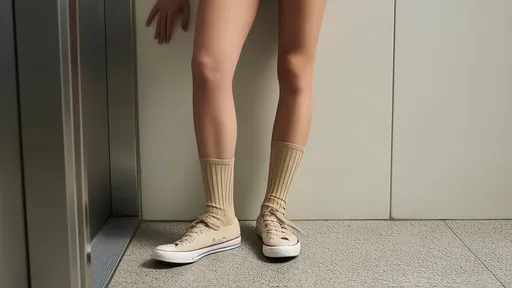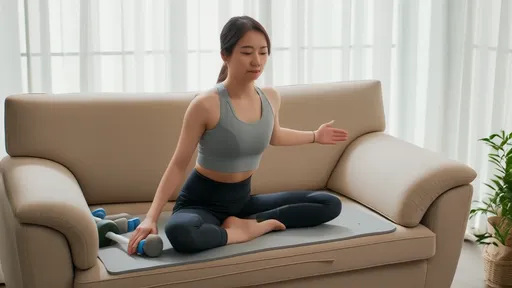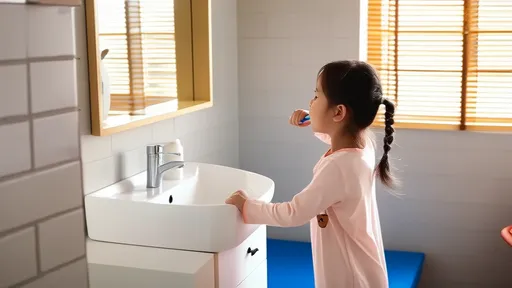In the hustle and bustle of modern life, finding time for fitness can be a challenge. Between work commitments, family responsibilities, and social engagements, dedicating hours to the gym often feels impossible. But what if you could sneak in a quick workout while going about your daily routine? One often-overlooked opportunity lies in those brief moments spent waiting for the elevator. This idle time presents a perfect chance to strengthen your foot arches – an essential but frequently neglected aspect of overall physical health.
The human foot is a marvel of engineering, with its intricate system of bones, muscles, and ligaments working together to support our entire body weight. The arch, in particular, plays a crucial role in shock absorption and propulsion during movement. Yet, in our shoe-wearing, pavement-pounding modern world, these arches often weaken over time, leading to various foot problems and even affecting posture and alignment further up the kinetic chain.
Understanding the importance of foot arch strength begins with recognizing how modern lifestyles have changed our relationship with the ground beneath us. Our ancestors walked barefoot or in minimal footwear across varied terrain, naturally exercising the small muscles of their feet. Today, we spend most of our time in supportive shoes on flat surfaces, allowing these muscles to atrophy. The result? Increased incidence of conditions like plantar fasciitis, flat feet, and general foot fatigue.
Elevator waiting areas, with their smooth, hard floors, actually provide an ideal setting for some simple arch-strengthening exercises. The key is to perform movements that engage the intrinsic foot muscles – those small but mighty muscles entirely contained within the foot itself. These exercises don't require special equipment, won't draw strange looks from colleagues, and can be done in regular work attire.
One effective technique involves what podiatrists call the "short foot exercise." While standing normally (perfect for elevator queues), try to shorten your foot by drawing the ball of your foot toward your heel without curling your toes. This subtle movement activates the arch-supporting muscles. Hold for a few seconds, release, and repeat. The beauty of this exercise lies in its invisibility – no one around you will notice you're working out.
Another valuable exercise is the toe spread. Simply attempt to spread your toes apart while keeping them flat on the ground. This movement strengthens the muscles that support the transverse arch (the one that runs across the width of your foot). Many people find they can barely move their toes independently at first – a sign of how underused these muscles have become. With regular practice during elevator waits, you'll notice improved control and strength.
The benefits of these micro-workouts extend far beyond stronger feet. Proper arch support affects your entire posture. Weak arches can lead to collapsed foot posture, which in turn causes internal rotation of the knees, pelvic tilting, and even spinal misalignment. By strengthening your arches in these brief moments, you're actually contributing to better overall body mechanics that can prevent back pain, knee issues, and other common complaints.
For those who spend much of their day standing, these exercises offer particular value. Teachers, retail workers, healthcare professionals, and others who are on their feet for hours will notice reduced fatigue and improved comfort after incorporating arch-strengthening into their elevator waiting routine. The increased blood flow and muscle activation can help prevent that end-of-day foot ache many standing professionals experience.
Timing is everything when it comes to making these exercises effective. The average person waits for an elevator several times a day – in office buildings, apartment complexes, shopping centers. These moments add up. Just thirty seconds of focused arch work each time can total several minutes of daily foot conditioning without requiring any additional time commitment. Consistency with these brief sessions yields better results than occasional longer workouts.
It's worth noting that proper form matters even in these simple exercises. Keep your weight evenly distributed between both feet. Avoid gripping the floor with your toes, as this can lead to cramping. The movements should be controlled and precise rather than forceful. If you experience pain (beyond normal muscle fatigue), stop the exercise and consult a podiatrist.
Beyond the physical benefits, these elevator exercises offer mental advantages too. That brief moment of focused attention on your body can serve as a mindfulness break in a busy day. Instead of impatiently watching elevator numbers change, you're engaging in purposeful activity that benefits your health. This shift in perspective can transform wasted time into valuable self-care moments.
For those looking to track progress, simple tests can show improvement over time. Try standing on one foot – stronger arches will make this easier as your foot becomes more stable. Notice if foot fatigue sets in later in the day, or if you can walk longer distances comfortably. Many practitioners report that their shoes begin to fit differently as their arches become more supported by muscle rather than relying solely on footwear.
Incorporating these exercises into your routine requires nothing more than awareness. The next time you find yourself waiting for an elevator, resist the urge to pull out your phone. Instead, tune into your feet. Feel the ground beneath you. Engage those small muscles that modern life has allowed to weaken. Your feet – and indeed your entire body – will thank you for these moments of attention spread throughout your day.
As with any exercise program, gradual progression yields the best results. Start with just a few repetitions during each elevator wait, gradually increasing as your foot strength improves. Over weeks and months, these brief sessions can lead to significant changes in foot health and overall comfort. The elevator, often seen as a symbol of sedentary modern life, can thus become an unlikely ally in your fitness journey.
The broader lesson here is about recognizing the hidden opportunities for movement in our daily lives. We don't need fancy equipment or large blocks of time to improve our physical wellbeing. Often, the most effective fitness strategies are those that integrate seamlessly into our existing routines. By viewing idle moments as potential workout opportunities, we can accumulate significant health benefits without disrupting our schedules.
So the next time you press that elevator button, remember: you're not just summoning a lift, you're initiating a workout session. Those thirty seconds of waiting represent another chance to strengthen your foundation, one small muscle at a time. In the grand scheme of health and fitness, it's these consistent, small efforts that often make the biggest difference over time.

By /Jul 28, 2025

By /Jul 28, 2025

By /Jul 28, 2025

By /Jul 28, 2025

By /Jul 28, 2025

By /Jul 28, 2025

By /Jul 28, 2025

By /Jul 28, 2025

By /Jul 28, 2025

By /Jul 28, 2025

By /Jul 28, 2025

By /Jul 28, 2025

By /Jul 28, 2025

By /Jul 28, 2025

By /Jul 28, 2025

By /Jul 28, 2025

By /Jul 28, 2025

By /Jul 28, 2025

By /Jul 28, 2025

By /Jul 28, 2025